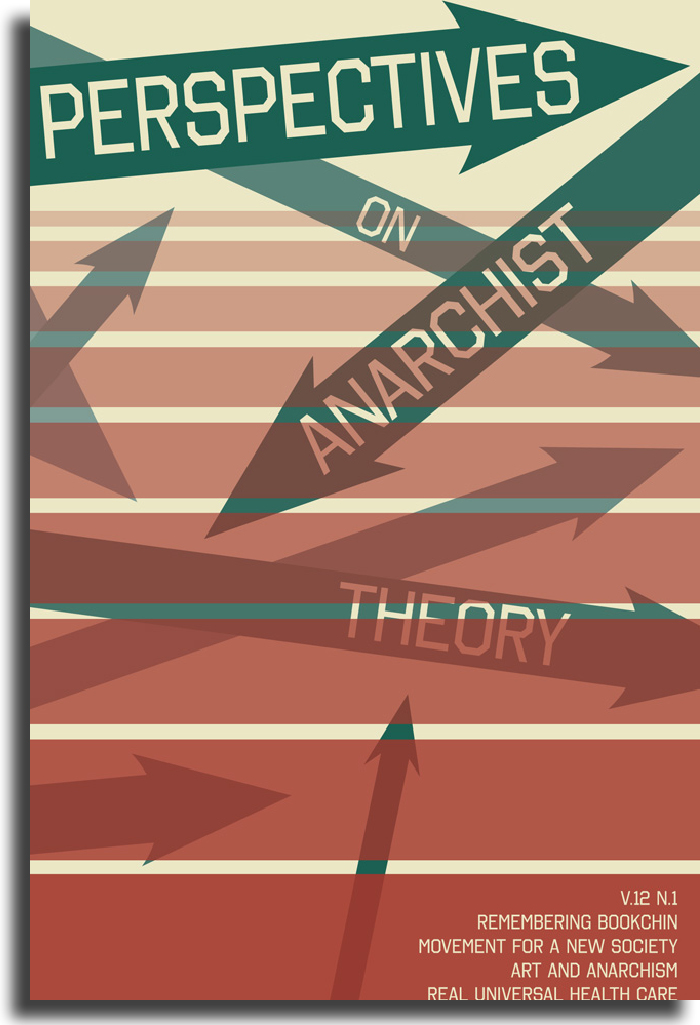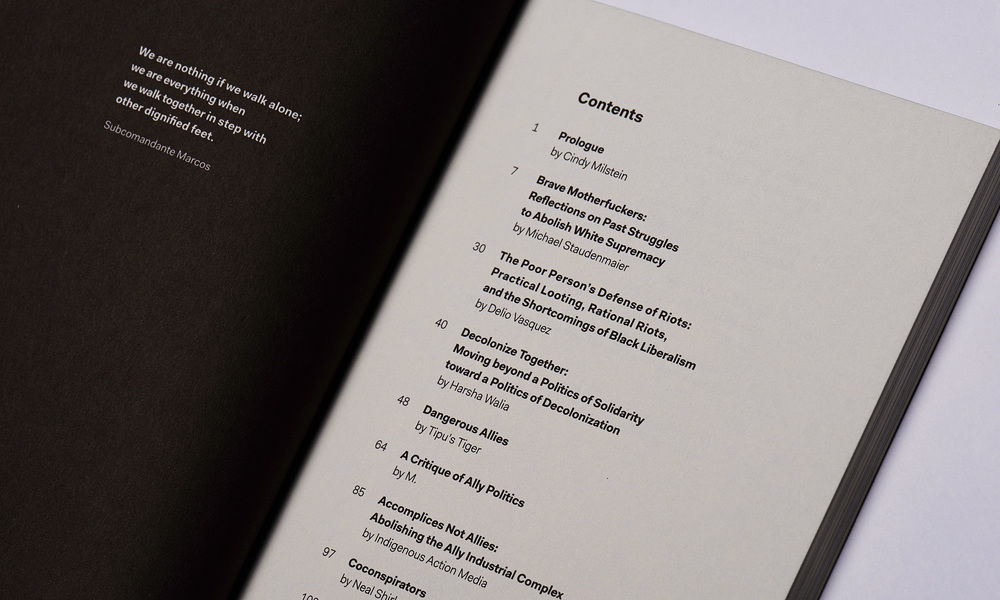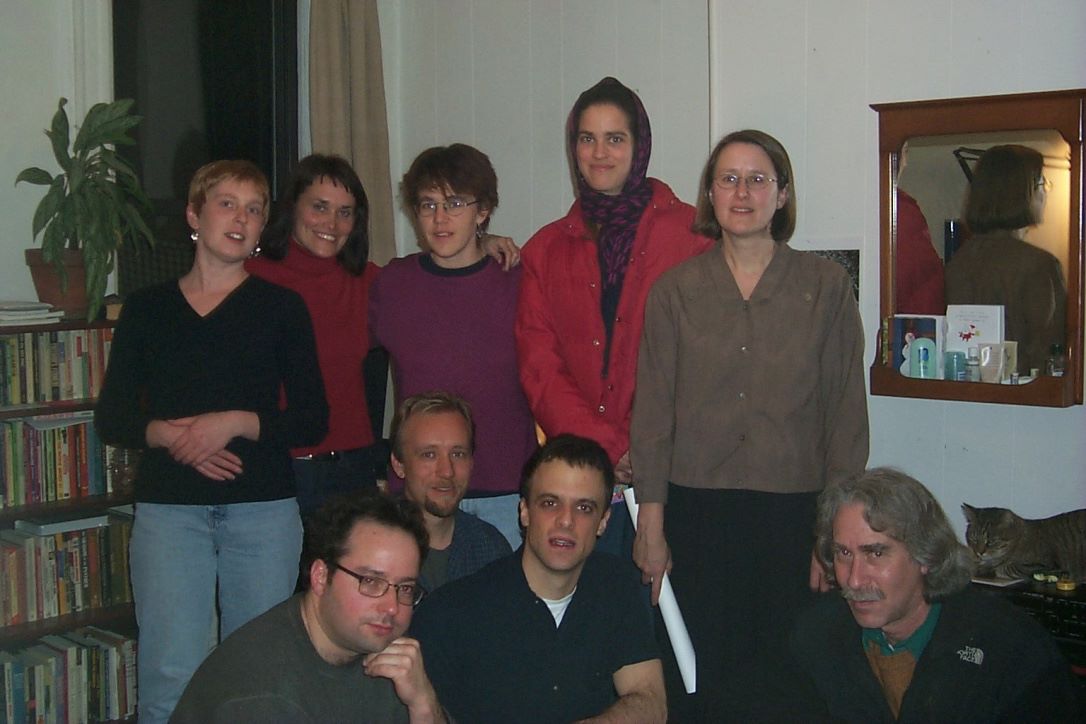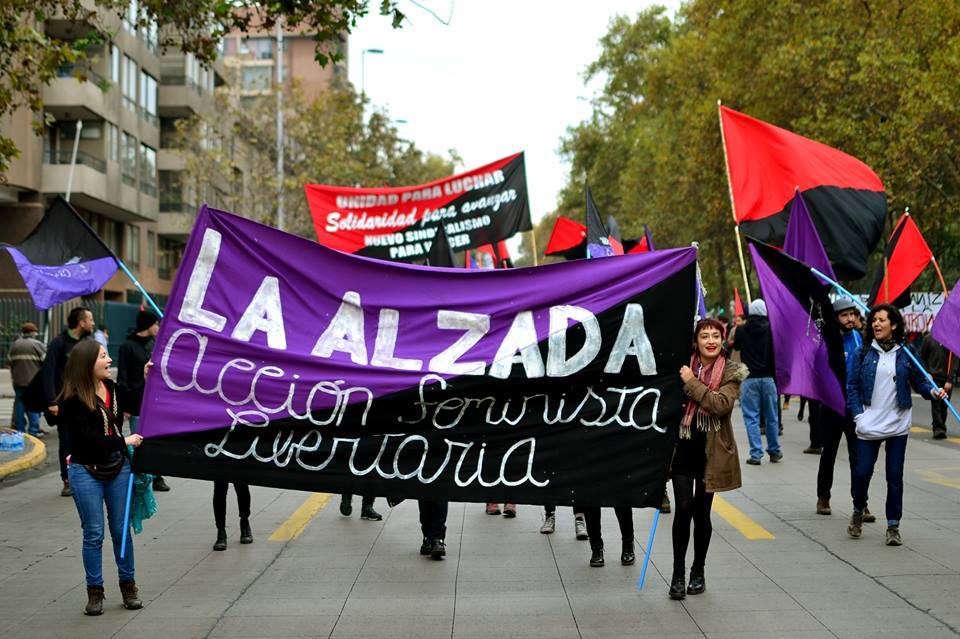
In their 1971 manifesto, “Anarcha-Feminism: Two Statements,” the Red Rose and Black Maria Black Rose Anarcho-Feminists define anarchism as “the affirmation of human freedom and dignity expressed in a negative, cautionary term signifying that no person should rule or dominate another person,” and they encourage libertarian socialist feminists to cultivate “all the groovy things people can do and build together, once they are able to combine efforts and resources on the basis of common interest, rationality, and creativity” (15). In a radical response to the repressive, violent, and “pathological structure” of the State, they conclude this manifesto with a demand for “ALL POWER TO THE IMAGINATION!” (17) Anthologized within the Dark Star Collective’s Quiet Rumors: An Anarchist-Feminist Reader, the Red Rose and Black Maria Black Rose manifesto opens the collection as a reminder of the need to be ever creative in our feminist approaches. Also, to collectively imagine and manifest complex transformations in how people might relate to one another outside the crushing structures of power and hierarchical notions of human value.
#PerspectivesonAnarchistTheory
An Appeal from Noam Chomsky: Support Radical Writing and Publishing
Happy Birthday Noam! In a time when money and power are concentrated into ever-fewer hands, the Institute for Anarchist Studies (IAS) stands out. For two decades, the IAS has been providing grants to radical organizers and thinkers, allowing them to take time to reflect and … Read more
Staying Power: The Institute for Anarchist Studies, Twenty Years Running, by Michelle Renee Matisons
Regarding the earliest days of the IAS, the story is quite simple. I was living in Greenpoint, Brooklyn when Chuck Morse called me to ask if I’d like to work with him on a new project. He explained his idea for an organization that would … Read more
Perspectives' Anarcha-Feminisms Issue Reviewed, by Michelle Renee Matisons
Michelle Renee Matisons reviews the latest issue of Perspectives on Anarchist Theory, N. 29, on the theme of anarcha-feminisms, in Counterpunch. She says, “Enter Perspectives, which should be read as part of the ongoing effort to expand anarcha-feminist ideas. True to form for the IAS, the issue offers a thoughtful cross-section of history and theory engaged in anarchist and popular movements: education, prisons, labor, health care, ecology, and Indigenous resistance are all included in Perspectives. In and of itself, given the challenging conditions of the academic/movement rift, Perspectives is valuable because it is grounded in nuts and bolts movement work, while also drawing from relevant academic resources as well.”
100 in Anarchist Years: The IAS at 20
by Paul Messersmith-Glavin
The Institute for Anarchist Studies (IAS) has received applications for writing grants throughout various waves of organizing over the last two decades. From Zapatista solidarity organizers in the nineties, to anti-capitalist globalization activists in the early ‘00s, Occupy folks over the last several years, and … Read more
Behind Design: Perspectives, N. 29
This is an excerpt of a piece Josh MacPhee wrote for the Justseeds Artists’ Cooperative blog “Behind Design.” In it he describes the thought and work that went into the current cover art for Perspectives on Anarchist Theory.
I wanna show what went into the creation of the cover design for the new issue of Perspectives on Anarchist Theory, which went on sale in the Justseeds store this week. Perspectives started out a simple 4-8 page newsletter for the Institute for Anarchist Studies (IAS) almost twenty years ago. Twelve years ago it merged with the publication The New Formulation: An Anti-Authoritarian Review of Books to become a traditional magazine-sized (8.5″ x 11″) publication, running 48-60 pages per issue. This format stuck for a couple years, then their were multiple single-issue attempts to convert it into a journal-sized format. I joined the board of directors of the IAS in 2009, and it was decided to relaunch it once again as a journal, but this time to have an editorial board that was connected to, but not the same as, the board of directors of the IAS. I took over design duties, and Perspectives v.12 n.1 was the first issue I did the cover for. It quickly sold out, and it was decided that this was the format we were going to stick with.

Breaking the Waves: Challenging the Liberal Tendency within Anarchist Feminism, By Romina Akemi and Bree Busk
The Black Rose Anarchist Federation sent a delegation to participate in AFem2014, an international anarchist feminist conference developed by a committee of anarchists organizing in the UK. The goals of AFem2014 were to challenge sexism and other forms of oppression within the anarchist movement and … Read more
Taking Sides on Taking Sides: A Response to Arun Gupta’s Review of Taking Sides: Revolutionary Solidarity and the Poverty of Liberalism (AK Press, 2015), by Michael Staudenmaier
Here is a response to Arun Gupta’s review of Taking Sides. It is written by Michael Staudenmaier, author of Truth and Revolution: A History of the Sojourner Truth Organization, 1969–1986 (AK Press, 2012). Michael wrote an original essay, “Brave Motherfuckers: Reflections on Past Struggles to Abolish White Supremacy” that opens and introduces Taking Sides: Revolutionary Solidarity and the Poverty of Liberalism (AK Press, 2015). This is the type of discussion we were hoping would be generated by Arun Gupta’s review. We encourage you to continue the discussion in the comments section. Perspectives Eds.
Early on in Arun Gupta’s review of Taking Sides, “A War of All Against All,” which appeared here in Perspectives, he writes, “The exact purpose of the book is hard to glean, other than gushing white-hot rage.” Replace “book” with “review” and you have an apt description of his essay. It is clear that Taking Sides made Gupta angry, but it is not at all clear why. Nor does he offer much of an alternative framing for a set of issues he acknowledges are important.

PLAY: A Call for Submissions for the Next Issue of Perspectives
Are you an organizer or activist currently engaged in movement work? Are you interested in taking time to reflect on the lessons and ideals of this work in order to help advance anarchist praxis? Are you a self-taught thinker with a particular interest or expertise in some aspect of radical history or practice? Are you willing to share your insights to contribute to our collective memory? Do you have ideas, experiences, or questions that you would like to develop and share with a wider audience?

If you answered “yes” to any of these questions, the Perspectives on Anarchist Theory editorial collective would like to hear from you. We believe it is crucial that those of us with visions of a free society share our work and ideas so that we can create a solid, common foundation on which to build a better world. We value underrepresented voices, accessibility, complexity, and the rigorous investigation of ideas.





